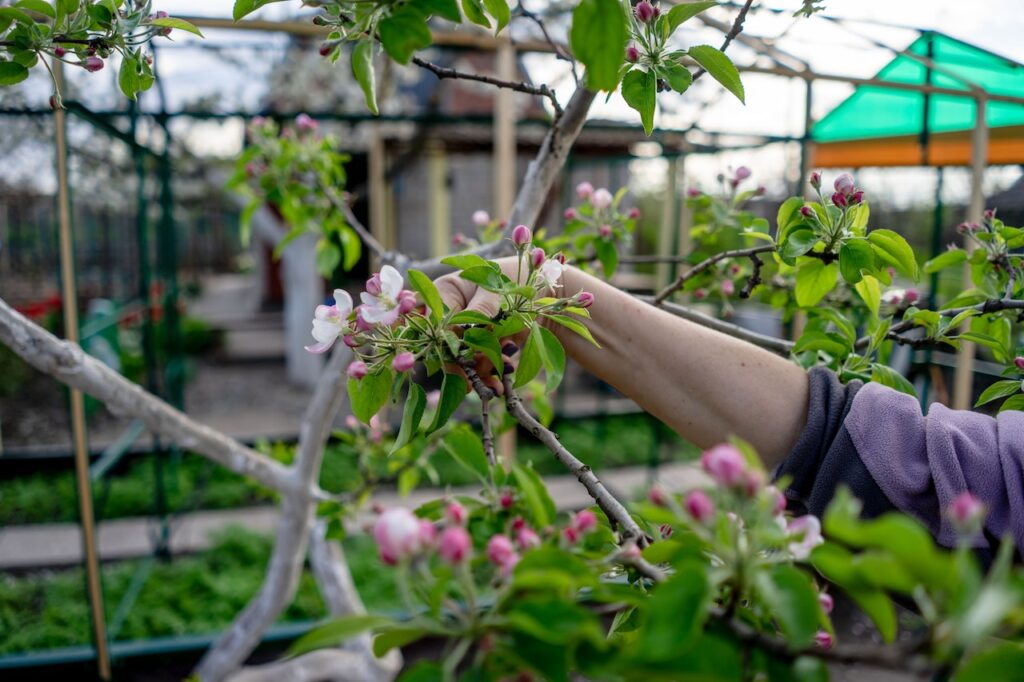Proper tree trimming is essential for the health, safety, and aesthetics of trees in Mesa, Arizona. Trimming trees at the right time and with the correct frequency ensures optimal growth, reduces the risk of hazards, and enhances the beauty of the landscape. However, determining when and how often to trim trees can vary based on tree species, age, health, and environmental factors. This article discusses the best practices for timing and frequency of tree trimming in Mesa, AZ, to help residents and property owners make informed decisions for their trees.

Timing of Tree Trimming
The timing of tree trimming is critical to minimize stress on the trees and maximize their response to the pruning process. In Mesa, there are two main periods when tree trimming is recommended:
a) Dormant Season (Late Winter to Early Spring):
The dormant season, typically from late winter to early spring, is the ideal time for tree trimming in Mesa. During this period, trees are not actively growing, which means that pruning causes less stress and reduces the risk of disease or pest infestations. Additionally, without leaves on the branches, arborists have a clearer view of the tree’s structure and can make more precise pruning cuts.
b) Early Fall:
In Mesa, early fall can also be suitable for tree trimming, especially if there are specific issues that need immediate attention. Pruning in early fall allows trees to recover before the winter season while still taking advantage of the warm weather and active growth periods. However, it is essential to avoid late fall pruning, as new growth may not have enough time to harden off before winter.
Frequency of Tree Trimming
The frequency of tree trimming depends on various factors, including the tree species, its age, health, growth rate, and desired aesthetic goals. In general, there are three main categories for tree trimming frequency:
a) Young Trees (1-5 Years Old):
Young trees require more frequent trimming to establish a healthy and balanced structure. Trimming young trees every 1 to 3 years helps shape their growth and correct any structural issues. Structural pruning during the early years sets the foundation for a strong and attractive mature tree.
b) Mature Trees (6-20 Years Old):
Once trees reach maturity, the frequency of tree trimming can be reduced to every 3 to 5 years. Mature trees are well-established and require less intervention. However, occasional pruning is still necessary to remove deadwood, maintain clearance from structures and utility lines, and address any safety concerns.
c) Established Trees (20+ Years Old):
For well-established trees, pruning can be extended to every 5 to 10 years. Established trees have developed a strong structure and are better equipped to handle natural growth patterns. Pruning at this stage is primarily focused on maintaining the tree’s health and appearance, with the goal of preserving its longevity.
Signs That Indicate Tree Trimming is Needed
Apart from following a recommended schedule, there are signs that indicate tree trimming is necessary even if it is not within the typical trimming cycle:
a) Dead or Dying Branches:
Dead or dying branches should be promptly removed from the tree to prevent them from falling and causing hazards. Deadwood also attracts pests and diseases, which can spread to healthy parts of the tree.
b) Crossing or Rubbing Branches:
Branches that cross or rub against each other create friction points that can lead to wounds and entry points for pests and diseases. Removing these branches helps maintain a healthy structure.
c) Overgrown Branches:
Overgrown branches can obstruct views, crowd neighboring trees, and interfere with buildings, utility lines, or streetlights. Pruning for clearance is necessary to address these issues.
d) Diseased or Infected Branches:
Infected or diseased branches should be pruned away to prevent the spread of the problem to other parts of the tree.
e) Hazardous or Storm-Damaged Branches:
Branches that pose a risk of falling or are damaged due to storms need immediate attention to ensure safety and prevent further damage.
Hiring a Certified Arborist
While some tree trimming tasks can be done by property owners, it is highly recommended to hire a certified arborist for tree trimming in Mesa, AZ. Certified arborists have the expertise and knowledge to properly assess tree health, structural integrity, and specific trimming needs. They have the necessary training and equipment to perform pruning safely and efficiently without causing harm to the tree or surrounding environment.
Proper tree trimming is crucial for the health and well-being of trees in Mesa, AZ. Understanding the best timing and frequency for tree trimming, as well as recognizing signs that indicate pruning is needed, ensures that trees thrive and contribute to the beauty of the landscape. Following a recommended tree trimming schedule, hiring a certified arborist, and practicing responsible tree care will help maintain the urban forest’s vitality and enhance the overall well-being of Mesa’s community.